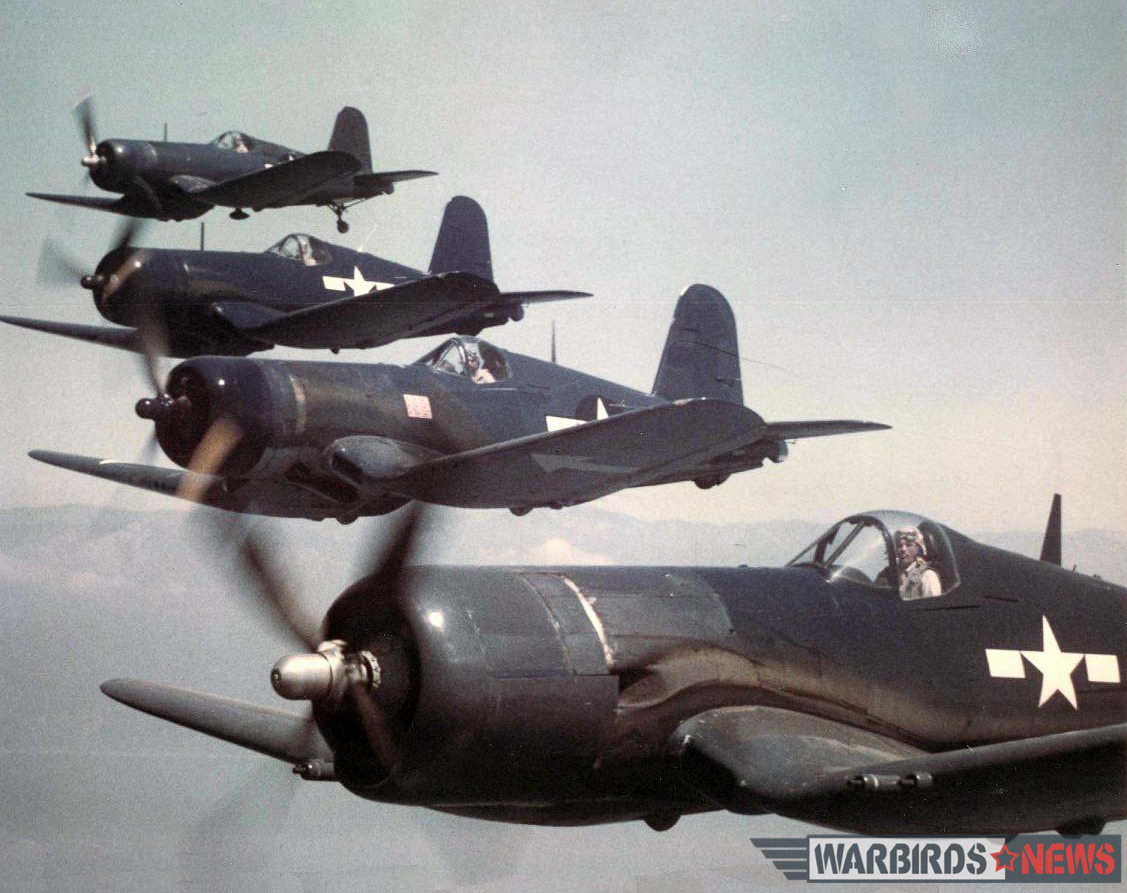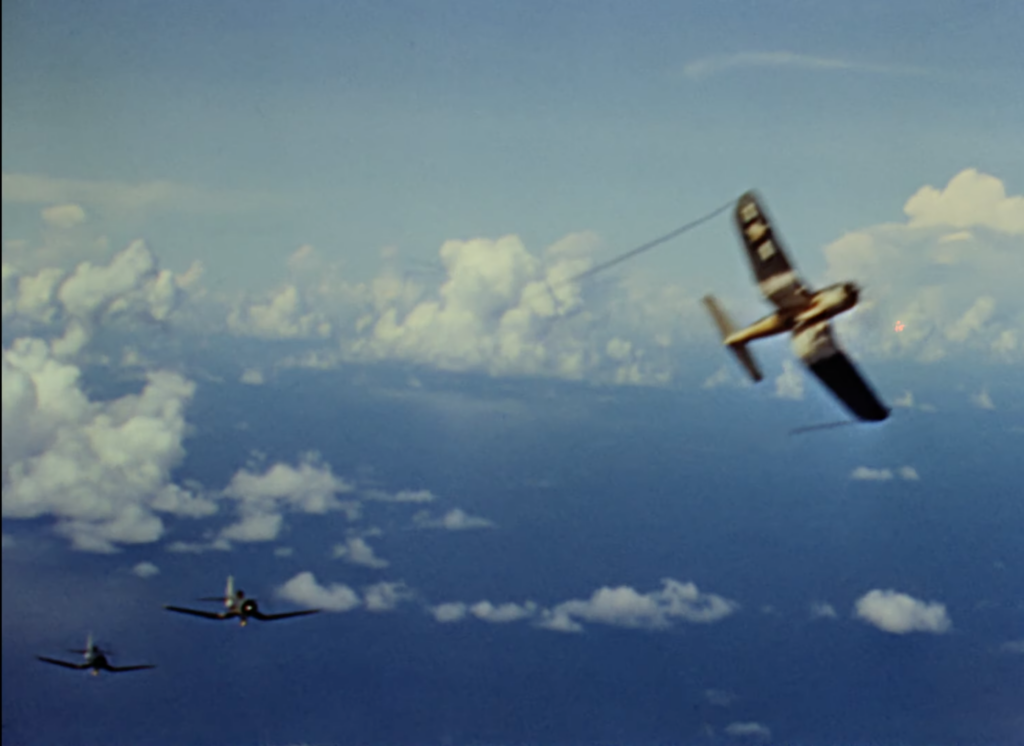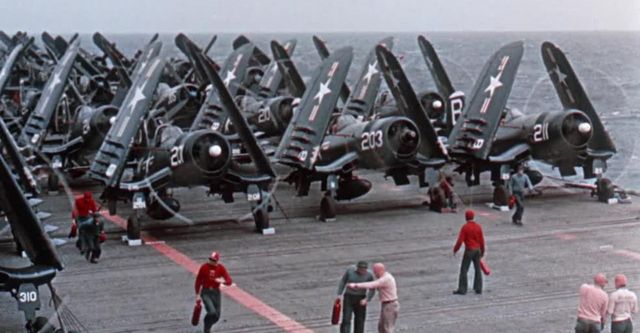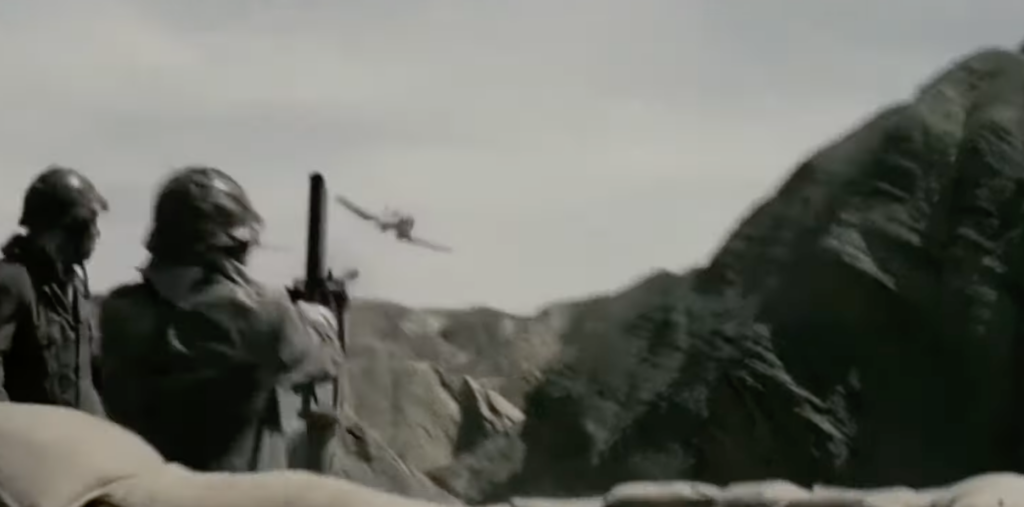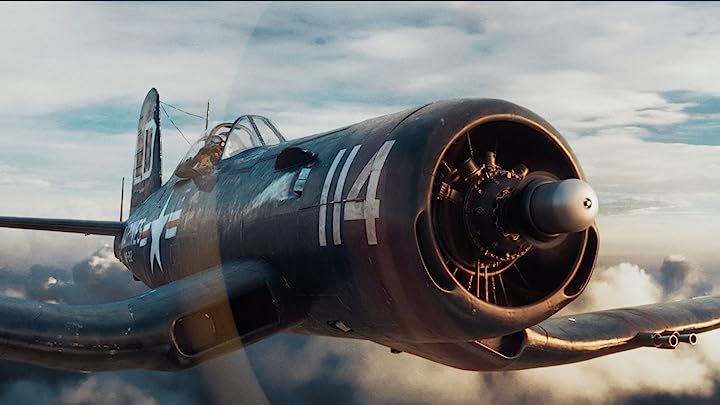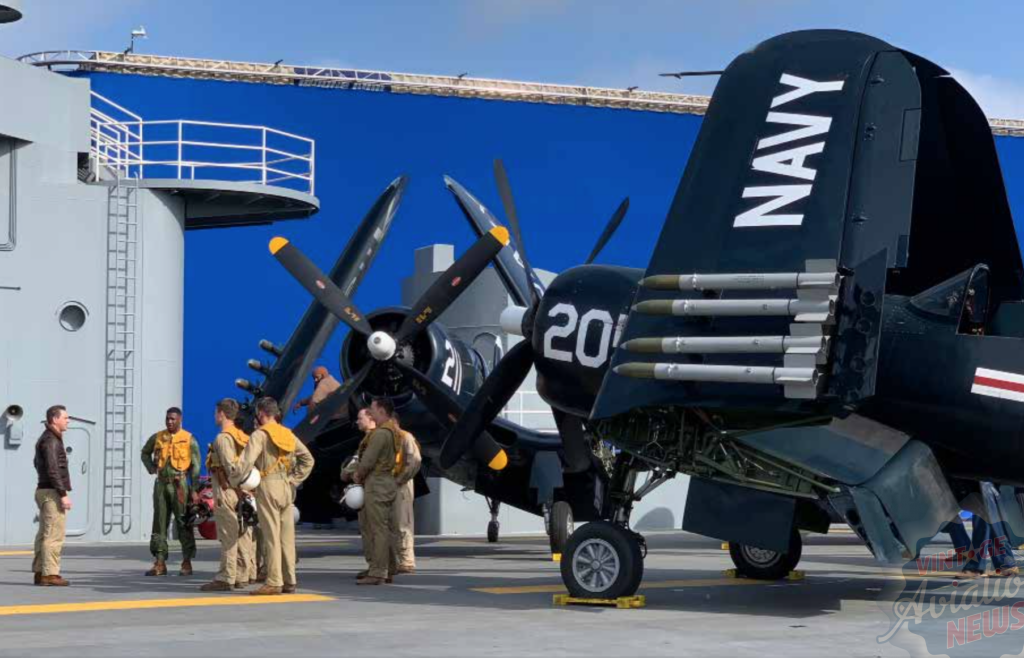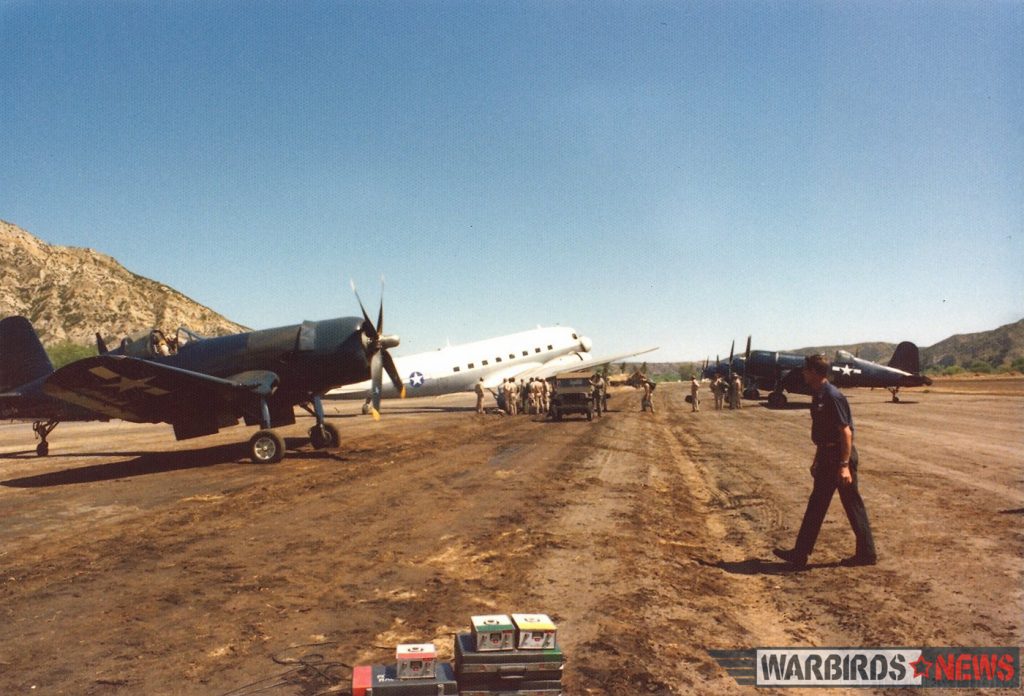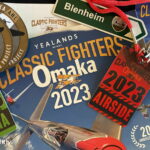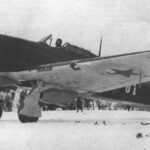by Stephen Chapis
The forthcoming gathering of Corsairs at AirVenture 2023, prompted us to take a look back at the naval fighter’s film appearances on both the big and the small screen. Some of these performances will be well known to most, while others were new even to this author. Whether actual aircraft featured or their CGI representations, each of these depictions pays homage to one of the greatest and longest-serving piston-engined combat aircraft in history.
The Flying Leathernecks (1951): This classic war movie depicts a fictitious U.S. Marine Corps fighter squadron, VMF-247 Wildcats, flying in the Battle of Guadalcanal. John Wayne’s character, Major Daniel Xavier Kirby, was based upon Captain John Lucian Smith, the Medal of Honor recipient and 19-victory ace who commanded VMF-223 Bulldogs on Guadalcanal during in 1942. Smith was eventually promoted to the rank of Lieutenant Colonel, as was Wayne’s character in the film.
In his book “The Aircraft-Spotter’s Film and Television Companion”, Simon Beck wrote, “Grumman F6F-5 Hellcats of VMT-2 at MCAS El Toro and Vought F4U-4 Corsair fighters of VMF-232 were assigned employed for filming on location at MCAS Camp Pendleton from November 1950 and February 1951.”
Flat Top (1952) Just as Baa Baa Black Sheep would a quarter century later, this movie employed actual newsreel and color aerial combat film. The latter included footage captured between October 23rd and 26th, 1944 during the Battle of Leyte Gulf. A majority of the contemporary footage was shot aboard the Essex-class carrier USS Princeton, whose hull number (CVA 37, later CVA 37, CVS 37 and LPH 5) can be clearly seen. The film’s opening prologue states: “We desire to express grateful appreciation to the Department of the United States Navy for the cooperation which was extended on the production of this picture. We especially salute the men and officers of the USS Princeton on whose ship many of the sequences were filmed.” Fittingly, the film premiered aboard Princeton in San Diego harbor on Armistice Day, 1952.
Taegukgi: Brotherhood of War (2004): This 2004 South Korean war film directed by Kang Je-gyu stars Jang Dong-gun and Won Bin. It tells the story of two brothers who are forcibly drafted into the South Korean army at the outbreak of the Korean War. Although the flying is exclusively CGI, it heavily features Corsairs conducting ground support and attack missions.
Sky Fighters (2005): This French film (titled Les Chevaliers du ciel in France) is about two air force pilots preventing a terrorist attack during the Bastille Day celebrations in Paris. You may be wondering what a French Top Gun-style film featuring Mirage 2000s has to do with a Corsair. Well, in a scene which is reminiscent of the Playboy Bunnies sequence in the 1979 film Apocalypse Now or Cher’s video “If I Could Turn Back Time” shot aboard USS Missouri in 1989, a female officer emerges from the cockpit of what appears to be an F4U-5 and proceeds to…well…just Google it.
Flags of Our Fathers & Letters from Iwo Jima (2006): Both of these movies were both directed and co-produced by Clint Eastwood. They tell the story of the Battle of Iwo Jima from the American and Japanese perspectives respectively. In the former, CGI Corsairs make deck-level fly-bys of the American convoy heading towards Iwo and later they are seen providing close-air support for Marines storming the island’s beaches. First-person point-of-view attacks on Mount Suribachi are also depicted. In the latter film, there is a scene featuring a squadron of Corsairs attacking a Japanese encampment. While both films were considered financial failures, as their gross receipts fell short of their production costs, they did receive considerable critical acclaim.
For Those We Love (2007): This powerfully emotional Japanese film documents the psychological toll which pilots in one of Imperial Japan’s “special attack units” experienced, and the consequential strain it had on their families too. This film receives an honorable mention on this list as the only time Corsairs actually appear on screen is when a kamikaze Hayabusa slams into an aircraft carrier.
Operation Chromite (2016): Like the films Taegukgi, Flags of Our Fathers, Letters from Iwo Jima, and For Those We Love which came before it and Sacrifice that followed, the Korean-made Operation Chromite shows carrier-launched Corsairs performing the all-important missions of flak suppression, ground attack, and close-air support, tasks which the aircraft performed so well during the Korean War. These appearances are all via CGI of course, but executed quite effectively.
The Sacrifice (2020): This Chinese-made film depicts the Battle of Kumsong, which took place in the last six weeks of the Korean War. That large-scale offensive, launched by the Chinese, was the last major clash of arms in the conflict.
The Corsair scenes depict a pair of F4U-5Ns dueling with anti-aircraft guns in typical, arcade-style CGI fashion, including pilots seemingly having an unlimited supply of 20mm ammunition. What is equally amusing is how the Chinese filmmakers present the CGI pilots as caricatures apparently inspired by John Belushi’s character, Captain Wild Bill Kelso, in the 1979 war-comedy 1941. Just prior to diving his Corsair at an anti-aircraft gun, the wounded, cowboy hat-wearing pilot took one last swig from his whisky flask before tossing it from his cockpit. Needless to say, it is a ridiculous film.
Devotion (2022): With one possible exception, the Corsair’s greatest moment on screen came in 2022, when a trio of actual Corsairs were interwoven with incredibly convincing CGI-created examples in the blockbuster movie Devotion. Based on the Adam Makos’ book of the same name, this film narrated the inspirational, true story of the U.S. Navy’s first black aviator, Ensign Jesse Brown, and the exploits of VF-32 in the early months of the Korean War.
Adam Makos
Baa Baa Black Sheep (1976-1978): The above-mentioned exception is without a doubt the NBC television series Baa Baa Black Sheep (and later Black Sheep Squadron), which featured eight actual Corsairs of various models, supported by over two dozen additional warbirds both in front of and behind the camera. We have published two great articles by Stephen Chapis linked HERE and HERE. Chapis is also working on a book about the TV show, to be notified when the book is releases.
Like Flying Leathernecks and Flat Top, the series made extensive use of WWII-era color gun camera films as well as footage captured during the filming of Tora Tora Tora in 1969. Those films, plus outstanding cinematography led by James Gavin and Frank Tallman, rival anything on the big screen. Some may pan the series for its unrealistic storylines and such, but the raw aerial action depicted still thrills the eyes even today.
If you are aware of more movies or TV shows appearances, please let us know.







